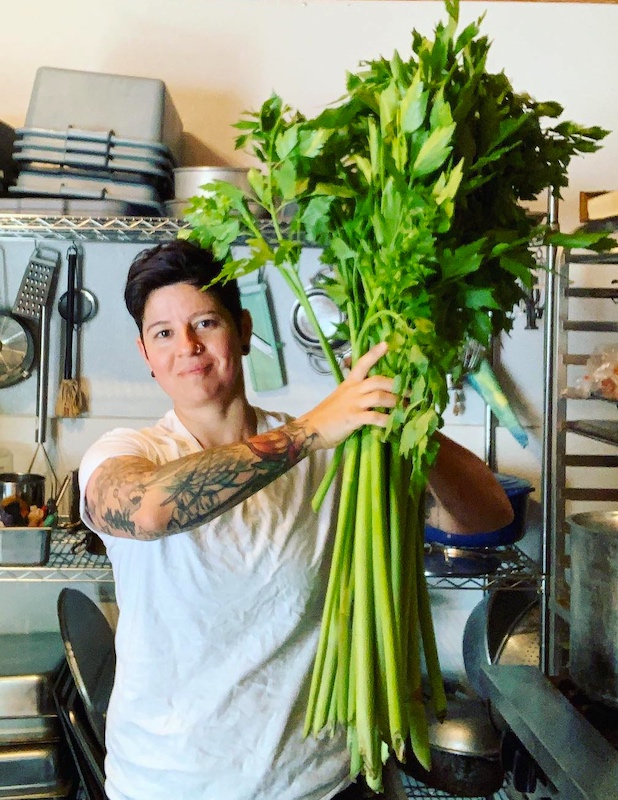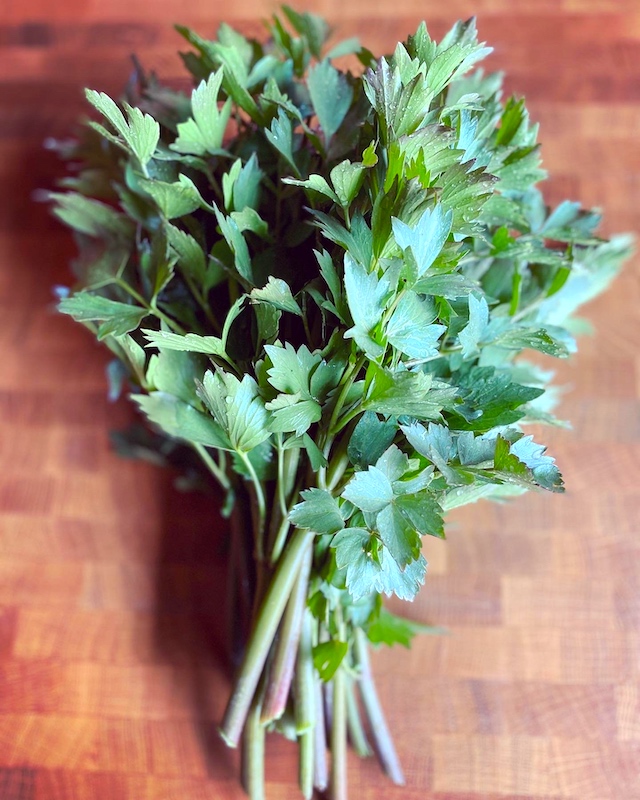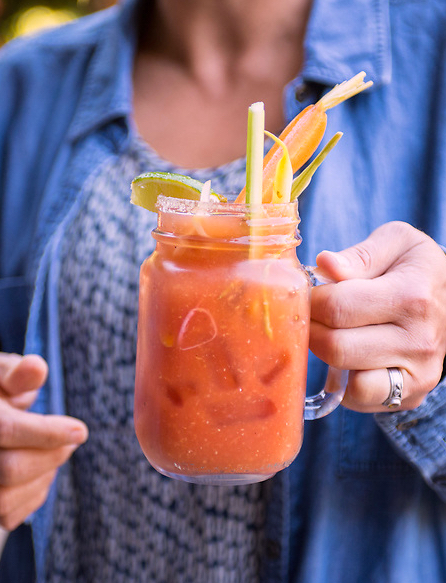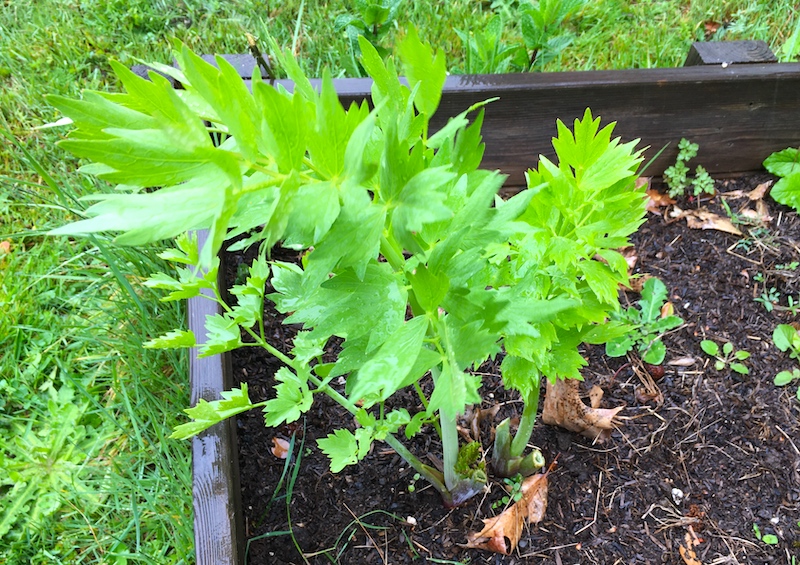
Loving Lovage: Like Cardamom and Celery Had a Baby
I first heard about lovage from Stacey Givens of The Side Yard Farm in Portland's Cully neighborhood. "It's like cardamom and celery had a baby," she said of its intense, pungent flavor. Inspired by her passion for the plant, I bought an organic start at my favorite neighborhood garden store, Garden Fever, and put it in one of my raised beds.

Just like Stacey promised, in its second year it was one of the first herbs to pop up in the garden, and I've already used its leaves to pep up salads, its tender stems have been sautéed and the leaves chopped into a pasta dish with ground pork, and just last night I chopped the stems and leaves into a white bean stew that featured a pig trotter braised into fall-apart tenderness.
To expland my horizons on what is rapidly becoming my new favorite herb, I called Stacey to get the lowdown on lovage.
"I fucking love it!" she exclaimed when I asked about the herb and how it fit in with the "whole plant" cooking she espouses at the farm. Givens went on to explain that she uses the leaves and tender stems in pesto and salads, finding their flavor particularly suited to grilled fish, soups and stews. The more mature stems are hollow, and she has used them for straws with the bloody Marys she served at the farm's legendary brunches.

Givens has two patches of lovage at the farm, one for fresh use as outlined above, and the other she lets go to seed. Lovage flowers are in "umbels" or clusters, like fennel or parsely, and the whole umbel can be shaken into a bag or large bowl to collect the pollen. The pollen can be used like fennel pollen with meats, eggs or dressings, and the flower heads themselves can be a garnish in salads or on cheese or charcuterie boards.
When the flowers go to seed, as with fennel, the seeds can be harvested and ground. Givens uses them as a garnish, sometimes pickling the seeds when they're still young and tender, and has also candied them with a coconut base.
If you're interested in having a lovage plant of your own, be sure to give these plants plenty of room, though, since the stems can get seven to 10 feet high. When they reach their full height, Givens says, she cuts them down, shakes off any leaves, and cuts them into one-foot lengths that are then bundled and dried to use in the farm's smoker. She recommends starting with a mild white fish like black cod that will be the perfect pairing to bring out its unique flavor.

In Vegetable Literacy, author Deborah Madison, also a lover of lovage, says it is third only to capers and green tea in its concentration of quercetin, a dietary flavonoid believed to have brain-protective, anti-allergy, and anticancer properties. Madison recommends using lovage with fresh tomatoes—a summer tomato salad would be amazing with a chiffonade of the leaves—or in green soups.
You can find lovage in the "herbs" section of the farm's online store, a venture new to the farm necessitated by the closing of local restaurants due to the coronavirus pandemic.
Givens said the loss of her longtime restaurant clients was a blow, but the sudden rush by the public looking for local food suppliers has more than offset the loss of restaurant revenue. Plus it has allowed her to partner with other producer friends to offer a wide range of homemade goods. (Givens said to look for her "killer" cherry and lovage soda pop syrup coming to the online store!) Another surprise? For the first time in years she's been able to experience what a weekend is like, since she's not doing end-of-the-week catering events.

Taking her love for lovage all the way through the finale of the meal, Givens said that the leaves and stems can also infuse an ice cream base. I may just have to try a lovage sorbet this summer that might be a fun pairing with a sweet melon.
Now if only that little plant in my raised bed would grow faster!
Watch Stacey's Seed. Plate. Eat., her show about taking one ingredient through its whole life cycle. (Episode 1 is about lovage!)
Photos of the Side Yard Farm by Shawn Linehan.